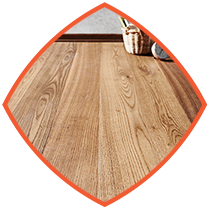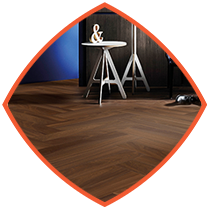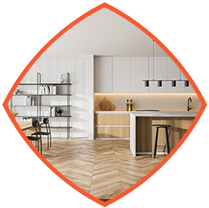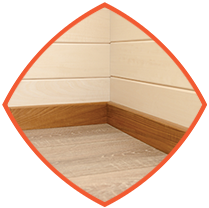8/3/2022 | 4:36:24 PM
4 Lesser-Known Benefits of Installing Engineered Wooden Flooring
Hardwood floors have been a trusted flooring solution for a long time now. That being said, their poor moisture resistance when combined with the nature of hardwood to contract and expand with changing temperatures makes hardwood flooring a rather outdated and unreliable flooring solution. Engineered wooden floors, on the other hand, come up with a topmost wood veneer layer and give you an enhanced performance against moisture and changing seasons when compared to hardwood floors. Continuing on the subject, in this post, we present a brief list of four lesser-known benefits of installing engineered wooden flooring. Read on.
Read More- 4 Benefits of Lacquered Finish For Engineered Wood Flooring Designs
1. A Plywood Subfloor is Not Required
Traditional hardwood floors would require you to install a ply-wood subfloor and cannot be directly installed over the concrete layer. Engineered real wood floors don’t require any additional sub-floors and can be installed on the concrete layer itself. This not only saves you time during installation but also costs you less to lay the flooring.
2. Can Be Installed in Basements
Engineered wooden floors can be installed in all areas that are generally more prone to moisture and humidity, such as basements. The better dimensional stability offered by engineered wood floors, which we will explain later, is the main reason why they can be installed in areas that are prone to high moisture and humidity. Hardwood floors, on the other hand, may undergo undesirable changes such as warping, when installed in basements, due to their poor performance against moisture.
3. More Stable than Hardwood
Engineered wood floors comprise multiple layers of stable core composite wood, because of which they have a relatively higher dimensional stability than hardwood. This invariably leads to better moisture performance. What’s more, the increased stability also makes engineered wood floors immune to expansions and contractions triggered by changing seasons.
4. Hassle-Free and Multiple Installation Options
You have multiple installation options for engineered floors, which include nailing down, stapling, glueing, or floating. Some manufacturers also give you an in-depth installation guide that makes the process even simpler and less tedious. As we mentioned earlier, the ability to install engineered real wood floors without having to lay an additional subfloor makes the whole process truly hassle-free.
See Also – More About Engineered Wooden Flooring








